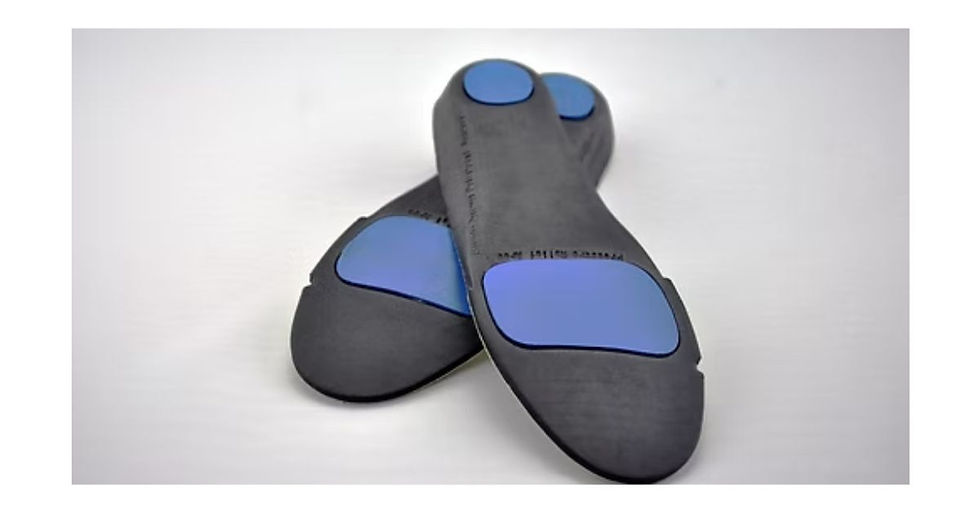A Stepwise Guide to Getting A Prosthetic Leg
- Lifeforce Hub Singapore

- Apr 27, 2022
- 4 min read
Updated: Sep 26, 2024

Getting a prosthetic or artificial leg or artificial fingers is not as easy as it sounds. Many considerations must be made to create an ideal design and successful construction of a prosthetic leg. Even so, a prosthetic user may expect a few weeks to a month to get used and comfortable in that artificial leg.
Hence, if you are planning to get an artificial leg that fits you right or requires an amputation, read on to help you understand the process of getting one.
Components of Prosthetic Leg
There are three main components of a prosthetic leg:
The limb
The biggest component of a prosthetic leg is the artificial leg built according to the state of your residual limb and your body. There are two types of limbs: one is for below-the-knee amputations and the other is for above-knee amputations that include an artificial knee.
Generally, prosthetic limbs are made from lightweight material and covered with skin- coloured cosmesis to simulate a natural leg’s appearance. However, the appearance of your artificial leg will differ depending on its purpose. A prosthetic leg designed for sports usually has a more mechanical appearance. Prostheses with robotic designs have a greater functionality and are designed to facilitate the athlete to move around as naturally as possible.
The socket
The socket is the transitional equipment that helps to attach and fit your residual limb to the artificial leg. The design and material of the socket is largely determined by whether the level of amputation, body weight and activity level.
The suspension system
Depending on the suspension system, the prosthetic leg can remain attached to the socket through sleeve suction, vacuum suction, or distal locking with a pin lock or lanyard.
Consult Your Doctor
Having learned about the components and system of a prosthetic leg, you should consult your doctor. Just like medicines, a prosthetic can only be prescribed by a doctor. Your doctor will consider the following when prescribing a prosthetic leg for you:
Do you have enough tissues in your residual leg to cushion the bones?
Is your wound completely healed?
Is your other leg healthy and able to bear weight?
How active were you before amputation?
Can your residual leg move?
A doctor will suggest you visit a prosthetist after evaluating your condition. A prosthetist is a qualified healthcare professional that creates and fits artificial legs or artificial fingers for people requiring artificial limb replacements.
The Construction of a prosthetic leg
Several steps are involved in the construction of an artificial leg:
Taking body measurements
Before constructing a prosthetic leg that fits as naturally as possible, the prosthetist will first take the necessary measurements of your residual limb and sound side leg.
Casting the stump
When the wound is completely healed and the swelling has subsided, the prosthetist will cast the stump or 3D scanning. The prosthetist will make a plaster mould of your residual leg. With this plaster mould, the prosthetist will construct a positive model of your limb using plaster, water, and quick setting gypsum (calcium sulfate hemihydrate). This positive model helps the prosthetist design a socket and construct to prosthetic leg that perfectly fits for your residual limb.
Creating the socket
By using the positive mould, a socket can be designed and constructed to a perfect fit for your residual limb. Several factors are considered while designing and constructing the socket, like your goals with the prosthetic leg, the location of tendons, muscles, and bones, and the health of the amputee.
Check the fitting of the prosthetic
Proper fitting is the most critical part of making a prosthetic leg. If the prosthetic is poorly fitted, it can cause you pain, blisters, and sores. That is why the prosthetist first makes a polypropylene socket fitting. A liner is placed to make you more comfortable and allow the socket to fit. The prosthetist will also ask you to walk on the temporary prosthetic to ensure that it is balanced and comfortable. Hence, be honest with your prosthetist about how you feel.
Once the perfect fit has been achieved, the prosthetist will assemble permanent prosthetic leg for you.
What happens after a permanent prosthetic is made?
When your permanent prosthetic leg is made, you do not start walking right away.
This is the most challenging part. Once your therapy begins, you will begin learning how to walk with your prosthesis. If you had an amputation below the knee, the learning process will be easier. In contrast, amputation above the knee requires more time and effort because your body / residual limb has to control how to use the artificial knee mechanism as well during gait cycle.
On average, the learning process typically takes between 2 to 6 months. However, it mostly depends on your confidence and motivation.
A Little About Us
At Lifeforce Hub, our goal is to assist you in reaching your goals with a prosthetic leg. Our chief prosthetist possesses more than 25 years of experience and a wealth of knowledge. His expertise and experience enable us to provide you with the best quality of services. Physiotherapy sessions can also be arranged to help you get used to your prosthetic. Feel free to reach out to us for more information.




Comments